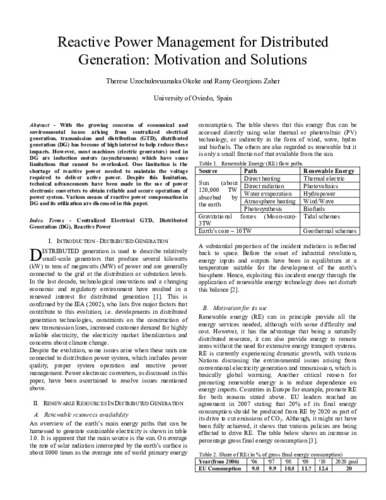Reactive power management for distributed generation: Motivation and solutions
Autor(es) y otros:
Palabra(s) clave:
Centralized electrical GTD,
Distributed Generation (DG)
Reactive power
Fecha de publicación:
Editorial:
IEEE
Versión del editor:
Descripción física:
Resumen:
With the growing concerns of economical and environmental issues arising from centralized electrical generation, transmission and distribution (GTD), distributed generation (DG) has become of high interest to help reduce these impacts. However, most machines (electric generators) used in DG are induction motors (asynchronous) which have some limitations that cannot be overlooked. One limitation is the shortage of reactive power needed to maintain the voltage required to deliver active power. Despite this limitation, technical advancements have been made in the use of power electronic converters to obtain reliable and secure operations of power system. Various means of reactive power compensation in DG and its utilization are discussed in this paper
With the growing concerns of economical and environmental issues arising from centralized electrical generation, transmission and distribution (GTD), distributed generation (DG) has become of high interest to help reduce these impacts. However, most machines (electric generators) used in DG are induction motors (asynchronous) which have some limitations that cannot be overlooked. One limitation is the shortage of reactive power needed to maintain the voltage required to deliver active power. Despite this limitation, technical advancements have been made in the use of power electronic converters to obtain reliable and secure operations of power system. Various means of reactive power compensation in DG and its utilization are discussed in this paper
Descripción:
2013 International Conference on New Concepts in Smart Cities: Fostering Public and Private Alliances (SmartMILE), Gijón (Spain), 11-13 diciembre 2013
Colecciones
Ficheros en el ítem




